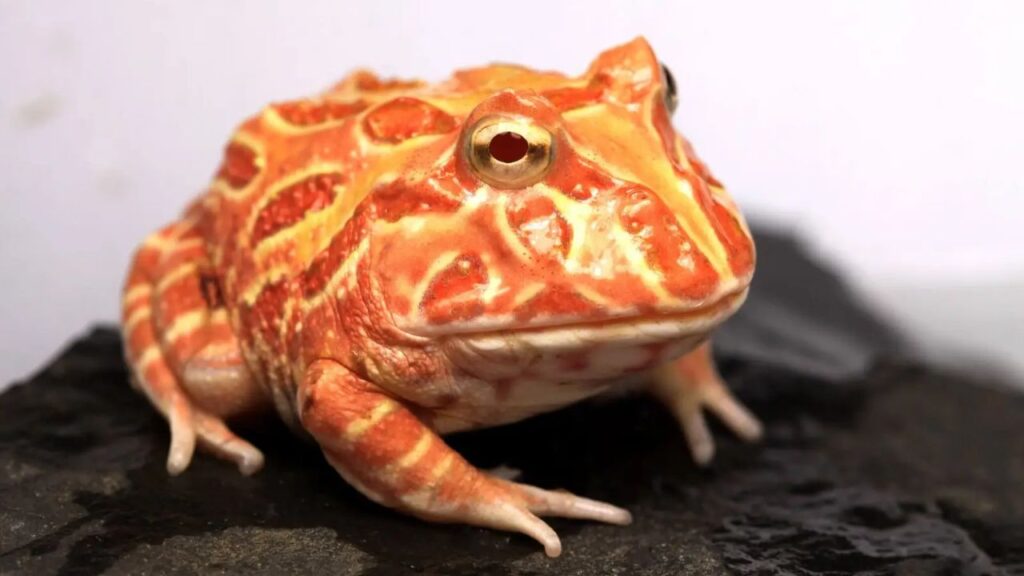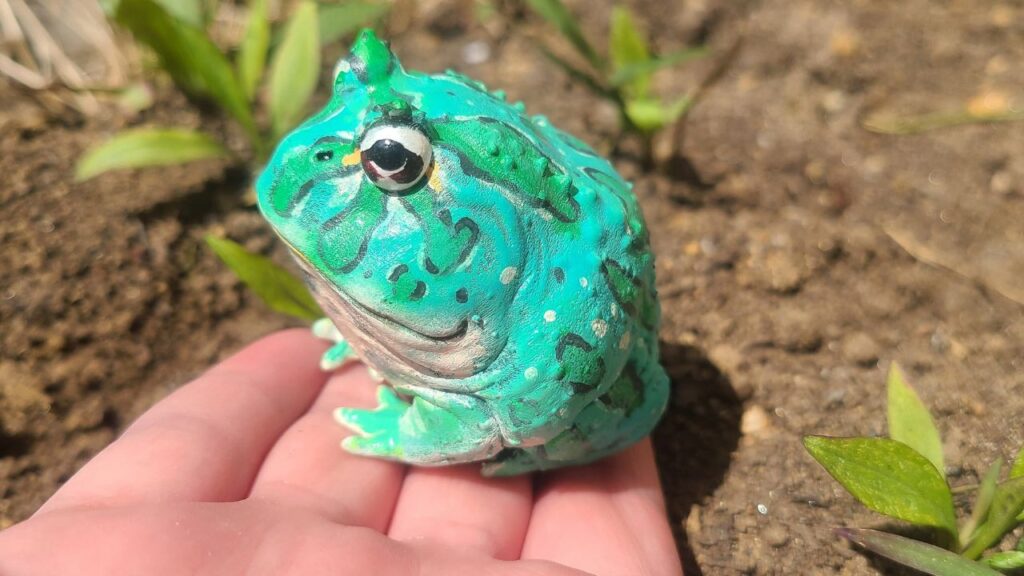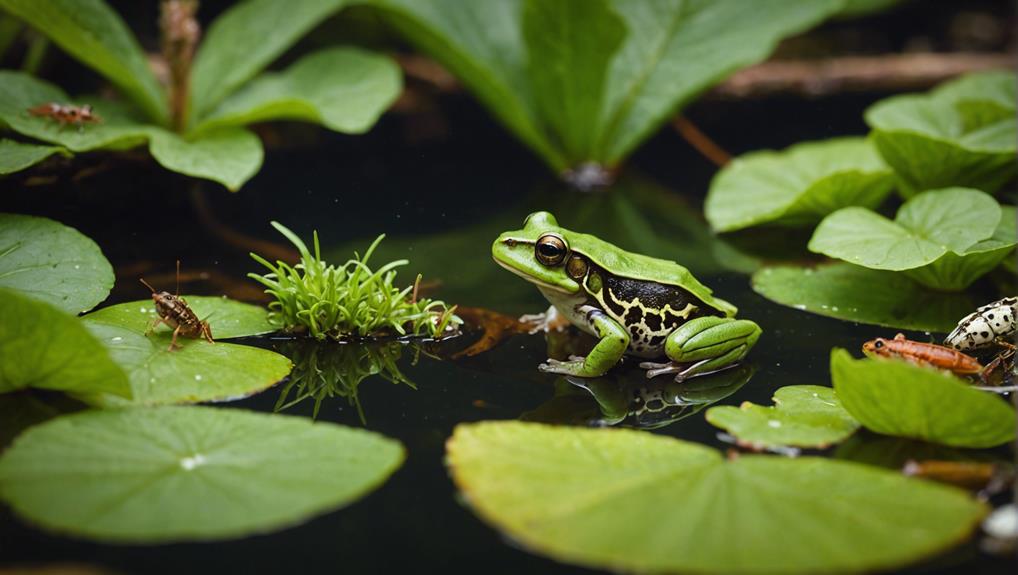You’re about to venture on a fascinating journey of raising strawberry Pacman frogs, a unique and rewarding pet that requires specific care and attention to thrive. To get started, set up an enclosure that’s at least 10-20 gallons, with a well-ventilated top, hiding places, and a temperature range of 75-85°F.
Feed your frogs a varied diet of live insects, and maintain a cleaning schedule to prevent bacterial growth. Monitor your frogs’ health by recognizing signs of illness, such as lethargy or changes in skin or eyes.
As you continue, you’ll discover the intricacies of caring for these enchanting creatures and uncover the secrets to helping them thrive.
Setting Up the Enclosure
To create a thriving environment for your strawberry Pacman frogs, start by selecting a well-ventilated, secure enclosure that provides ample space for your pets to move around and exercise.
A minimum enclosure size of 10-20 gallons is recommended, depending on the number of frogs you plan to keep. Avoid aquariums with narrow, tall shapes, as they can cause your frogs to jump and injure themselves.
Choose a well-ventilated top to prevent the buildup of moisture, which can lead to fungal growth and health issues.
You can opt for a screen top or a mesh top, but make certain it’s secure to prevent escape artists from making a break for it. A hiding place or two, such as plants, rocks, or commercial hides, will provide your frogs with a sense of security and reduce stress.
Temperature is vital, with a range of 75-85°F (24-29°C) being ideal for strawberry Pacman frogs.
You can use a heat source like a heat mat or a ceramic heat emitter, but place it safely outside the enclosure to prevent burns. A thermometer will help you monitor the temperature and make adjustments as needed.
Diet and Nutritional Needs
Now that you’ve created a comfortable environment for your strawberry Pacman frogs, it’s time to focus on providing them with the nutrients they need to thrive. As a responsible frog parent, it’s vital to understand their dietary needs to guarantee they receive the necessary nutrients for peak health.
Strawberry Pacman frogs are carnivorous, which means they feed on live insects.
You’ll need to provide a varied diet that includes a mix of staple insects like crickets, mealworms, and waxworms. This step is necessary to gut-load the insects with nutrient-rich foods before feeding them to your frogs. This guarantees the frogs receive the nutrients they need.
A good rule of thumb is to feed your frogs 2-3 times a week, depending on their age and size. You can also supplement their diet with calcium and vitamin powder to guarantee they’re getting all the necessary nutrients.
Make sure to research the specific nutritional needs of your frogs based on their life stage and adjust their diet accordingly.
Remember to provide a shallow water dish for your frogs to soak in, as they absorb water and nutrients through their skin. Change the water daily to maintain cleanliness and prevent bacterial growth.
Health and Hygiene Practices
You’ll need to establish a regular cleaning schedule to keep your strawberry Pacman frogs‘ enclosure clean and prevent the buildup of bacteria and fungi. A clean environment is vital for maintaining your frogs’ health.
Start by cleaning the enclosure at least once a week, removing any feces or uneaten food. You can use a reptile-safe cleaning solution to wipe down surfaces. Don’t forget to clean any hiding places, plants, and decorations, as these can harbor bacteria.
It’s also essential to disinfect any utensils or equipment you use to care for your frogs. You can soak them in a solution of water and bleach, then rinse thoroughly. Make sure to wash your hands before and after handling your frogs or their enclosure to prevent the transfer of bacteria.
In addition to cleaning the enclosure, you should also monitor the humidity and temperature levels. Strawberry Pacman frogs thrive in a humid environment with a temperature range of 75-85°F (24-29°C). You can use a hygrometer and thermometer to verify the levels are within the acceptable range.
Recognizing Signs of Illness
As you observe your strawberry Pacman frogs daily, keep an eye out for subtle changes in their behavior, appetite, or physical appearance that could indicate illness. It’s vital to catch any potential health issues early on, as prompt treatment can make all the difference in your frog’s recovery.
Lethargy or loss of appetite: If your frog is usually active and energetic, but suddenly becomes lethargic or shows no interest in food, it may be a sign of illness.
Changes in skin or eyes: Keep an eye out for any unusual skin lesions, ulcers, or changes in eye color or clarity.
Respiratory issues: If your frog is experiencing rapid breathing, wheezing, or making unusual sounds while breathing, it could indicate a respiratory infection.
Ongoing Care and Maintenance
To keep your strawberry Pacman frogs thriving, it’s essential that you establish a regular routine for cleaning their enclosure and monitoring environmental conditions.
This will help prevent the buildup of bacteria, fungi, and parasites that can harm your frogs.
Start by removing any feces or uneaten food from the enclosure daily, and replace any damp or dirty substrate with fresh, moist material. Clean the water bowl and replace the water with fresh, dechlorinated water daily.
Weekly, you should clean the entire enclosure by removing all the substrate and decorations, and washing them gently with warm water. Disinfect any surfaces with a reptile-safe cleaning solution, and let everything dry completely before replacing the substrate and decorations.
It’s also important to verify the temperature, humidity, and lighting levels in the enclosure to guarantee they’re within the recommended ranges for strawberry Pacman frogs.
Regular maintenance is vital to keeping your frogs healthy and happy. By establishing a routine and staying on top of cleaning and monitoring, you’ll be able to identify any potential issues before they become serious problems.
Remember to always handle your frogs gently and briefly, and avoid disturbing them unnecessarily. With regular care and attention, your strawberry Pacman frogs will thrive and bring joy to your life.
Frequently Asked Questions
Can Strawberry Pacman Frogs Be Handled Regularly?
“Break out your medieval glove, you’re about to grasp a delicate situation! When it comes to handling strawberry pacman frogs regularly, you’ll need to be gentle and brief, as they’re sensitive creatures that stress easily, so handle with care.”
How Long Do Strawberry Pacman Frogs Typically Live in Captivity?
You’ll be delighted to know that Strawberry Pacman Frogs can live up to 10-15 years in captivity, with proper care and attention, providing you with a long-term companionship and a chance to build a strong bond.
Are Strawberry Pacman Frogs Social or Solitary Animals?
You’ll find that strawberry pacman frogs are naturally solitary animals, not requiring social interaction, so you won’t need to worry about providing them with tankmates, making their care even more manageable for you.
Can I Keep Multiple Strawberry Pacman Frogs in the Same Enclosure?
You’re wondering if you can keep multiple Strawberry Pacman Frogs together in the same enclosure. Generally, it’s not recommended, as they’re territorial and may fight, but with a large enough space and careful monitoring, you might be able to make it work.
Do Strawberry Pacman Frogs Make Good Pets for Young Children?
You’re wondering if strawberry Pacman frogs make good pets for young children? Honestly, they’re not ideal for kids due to their sensitive care needs and potential health risks, requiring close adult supervision and gentle handling.


